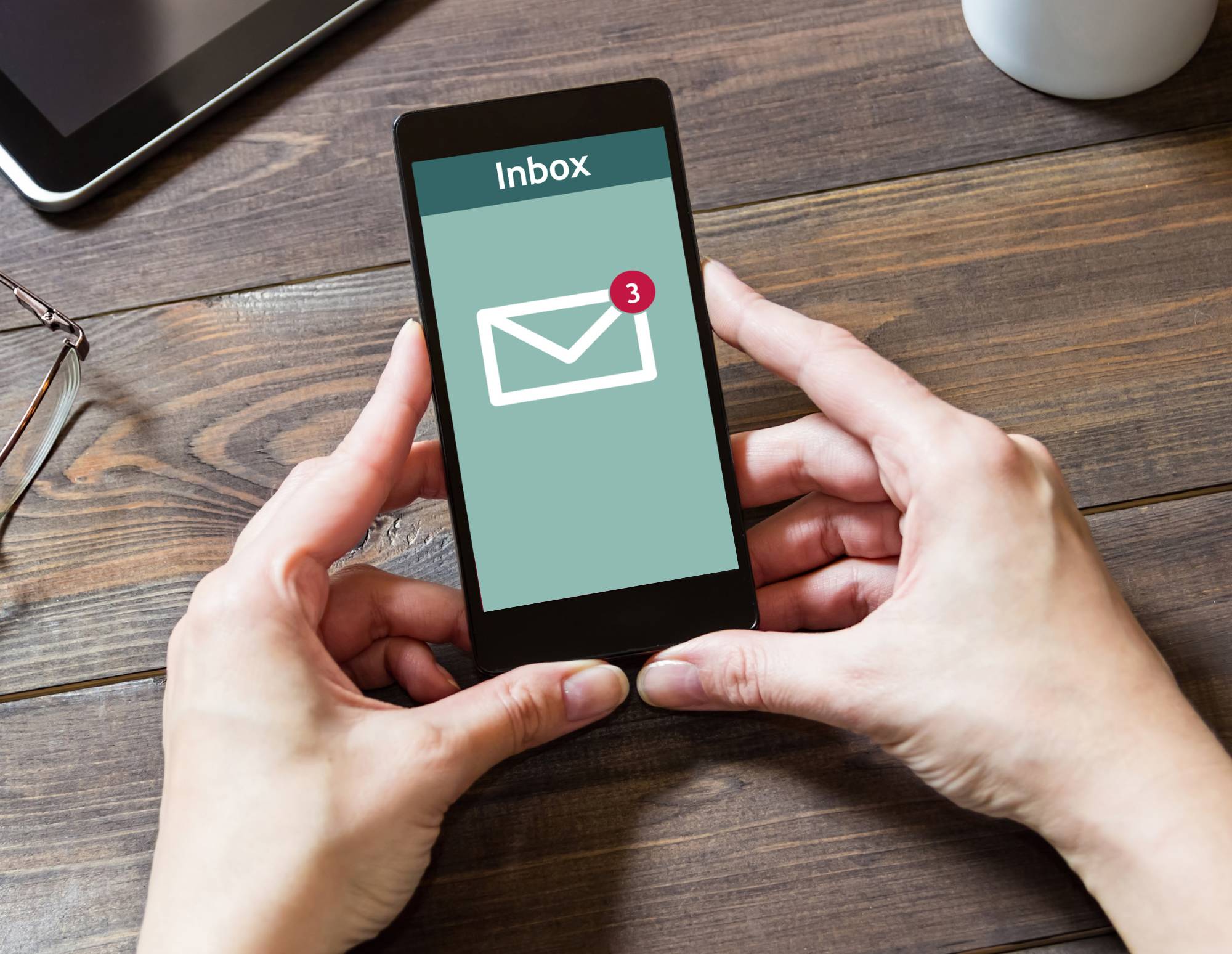Don’t let prospects leave you on read. Learn to write an introduction email to a new client that connects you with a qualified prospect.

How important are introduction emails? Many independents don’t know until they’re tasked with writing one. But think back to introductory emails you’ve received in the past. Did they make you feel excited about the topic at hand? Or did you feel like their introduction was cold and impersonal?
First impressions exist online just as much as they exist in person, and your first email to clients sets the tone. Learn how to introduce yourself in an email and set the stage for your ongoing client relationship.
Jump to:
- Why would you write an introduction email?
- Determine a catchy, on-brand subject line
- How to address your receiver
- How to introduce yourself eloquently
- How to propose the project
- How to close out your introduction email
- When and how would you write an introduction email for someone else?
Why would you write an introduction email?
There are a few likely reasons why you might write an introduction email to a new client. One is that they reached out about your services, and another is thatyou want to sell them your services. You may also have recently booked a client, and need an engaging way to begin your client onboarding process. We’re big fans of introduction emails at HoneyBook because they’re personal, engaging, and repeatable.
On their most basic level, introduction emails are designed to introduce one party to another.
So how do you write one of these that can be used time and again? It’s not as hard as you might think!
Determine a catchy, on-brand subject line
When a prospect reaches out to you about your services, typically they’re interested in hiring you. Your introduction email should address the prospective client by name, and pull them in with something interesting and conversational.
If you have an automated response with your services or packages that goes out to interested leads, this is a great place to do a micro introduction.
Start with “Thank you for reaching out!” to show prospective clients that you appreciate their interest.

Pro tip: With HoneyBook, you can create email templates for different use cases. Build an email intro that you can incorporate into your automations and send along with pricing guide files, sales brochures, and more.
What if you’re doing cold outreach?
If you’re doing cold outreach for your services, your subject line bears even more weight. You want the potential client to open the email, not immediately press “spam→delete” like they would on any old email.
Try an authentic line like one of the following:
- “I notice [prospect’s website.com] looks great, with one suggestion…”
- “Reference from [where you found the prospect’s name]”
- “We met at [place where you met], following up!”
Think carefully about your target audience. Stand in their shoes. If you were them, what subject line would intrigue you enough to open and read the email? Use subject lines that will intrigue and prompt your target audience to connect with your services.
Copy/Paste Template:
General Introduction Email
Hi [Prospect Name],
I’m [Name] with [company name].
It looks like you’re focused on [identify their goal – searching for a photographer, redesigning their website, etc.] and I’d love to show you how we can help you achieve your goals.
We’ve been in business for [time range], with a specific focus on helping clients like you achieve [solution].
Let’s find time this week or next to connect. I’m excited to offer a free consultation to understand your needs and what we can do to help. Feel free to book the time that works for you! [link to your meeting scheduler]
Warmly,
[Your Name]
How to address your receiver
Nothing turns people off like “Hi there,” or “To whom it may concern.” These openers tell your reader two things:
- You don’t know who you’re trying to reach and
- You didn’t do your research
In most instances these days it’s good to address your client informally. This means not using “Mrs. or Mr.” Call them by their first name and leave the last name off. Keep it friendly and casual so they’re interested in your email without feeling pressured to respond.
In this fake scenario, Michel Andrews is a freelance writer with great copy and content on their site, but their design needs some serious work. An introduction email to this person could read like this:
“Hi there Michel,
I am reaching out because I saw your website on XYZ, and your content is stellar! I’m wondering, though, if you would be interested in some help with your branding. I’ve helped freelance writers like you transform landing pages from informational to experiential—here are some results from a few of my favorite projects:
Yxz.com
Fourfivesix.com
Seveneightnine.com
I have a background in visual studies from NYU and have instructed courses for Code Academy.
Anyway, enough about me. Let me know if you’d be interested in some support and we can work out the details.
Talk soon,
Gabrielle
The Best Graphics Ever LLC”
If you’re unsure of your receiver’s pronouns, just refer to them by their professional title. Even if you can’t identify their pronouns by a work website, LinkedIn, or otherwise, you should be able to find out what they do for work.
How to introduce yourself eloquently
Something to keep in mind when you’re writing an email to introduce yourself is that even though you’re introducing yourself, it isn’t about you. The introduction email is about your prospective client and creating interest in your services.
When you reach out to prospects you think would be good clients, make your opening line about why you’re reaching out to them. Then talk about why you’re a good fit that can solve their pain points. Why should they hire you? This is where you answer that question.
Detailing credentials isn’t about gloating about your success, either. It’s about highlighting how your achievements are compatible with the client’s needs. This is more than a resume drop; it’s a pamphlet in the form of your past that provides the answers to the client’s struggle.
Download our guide to great first impressions.
Great first impressions can make or break your client experience.
Get my workbookHow to outline the project (or propose the project)
Similar to when you introduce yourself when you propose your services it’s important to frame the service as a personal offering to the individual. Introduction emails are all about building relationships and mutual connections. You have three seconds to grip someone’s attention and pitch your idea. Try to keep your pitch condensed to two sentences. Make it punchy, personal, and engaging. Your second or third sentence should be a value proposition transition.
Focus on the benefits of working with someone as skilled as yourself. What does the prospective client have to gain? Again, avoid sales-focused pitches. Show how the prospect will benefit from your services and why that benefit is important to them.
If you’re speaking to a client who’s already booked, welcome them warmly and direct them to the next steps. For instance, you might want to include your scheduler link so they can easily set up a kickoff call.
For booked clients, you may also want to let them in on the steps coming up in your client onboarding checklist. They don’t necessarily need the full list, but it can be helpful to give them the timeline from the kickoff call to the project start and any early milestones.
How to say goodbye in an introduction email
Extend a subtle invitation to connect once you’re ready to say goodbye. Mention that you’re free in the next few days and that the prospect can easily book time on your calendar with your meeting scheduler. You can also offer your contact information so they can reach out to you directly if they have more questions.
Thank the recipient for their time. Remember that they didn’t have to open your email—they chose to. Keep the close-out personal too by referring to the type of business they have. For example:
“Thank you again for your time and consideration, and I hope your freelance clients keep rolling in!”
When would you write an introduction email introducing two people (other than yourself?)
You may be asked to introduce people for a few reasons. The difference between writing your own introduction email and writing one for someone else is that you’re not selling your service anymore, you’re selling a relationship.
- Your client roster is full and you can’t take on a new client
This is a good problem to have. If you have too many clients (or just the right amount) and a prospect is working on a deadline, it’s your opportunity to recommend a friend. Even if you can’t help a client, the next best way to support them is by sliding them into another independent business owner’s clientflow. Be sure it’s someone you trust, and remember, what goes around comes around.
- You don’t offer the specific services a client inquired about
If you’re a graphic designer and the client inquired about website design, but you just do the visuals, not the build-out from the bottom up, it might be time to offer a strong referral for another independent. Fortunately, you know of a directory of Pros through HoneyBook that can deliver on your prospect’s needs. If you can’t help them with your services, at least you can help them with a referral!
Introduction emails can be easy
Introduction emails are easy with email templates and customizable functionality. At HoneyBook, we’re all about efficient personalization. Never miss an opportunity to educate a potential client on your services. Don’t be afraid to cold email—once a prospective client is in your pipeline, you’ll sail smoothly with our customizable templates. Never fear, HoneyBook’s clientflow management platform is here 😎.
Schedule discovery calls and book more clients
With HoneyBook’s all-in-one clientflow management platform, you can easily schedule calls with your prospects for quick qualification.
Start free trial


